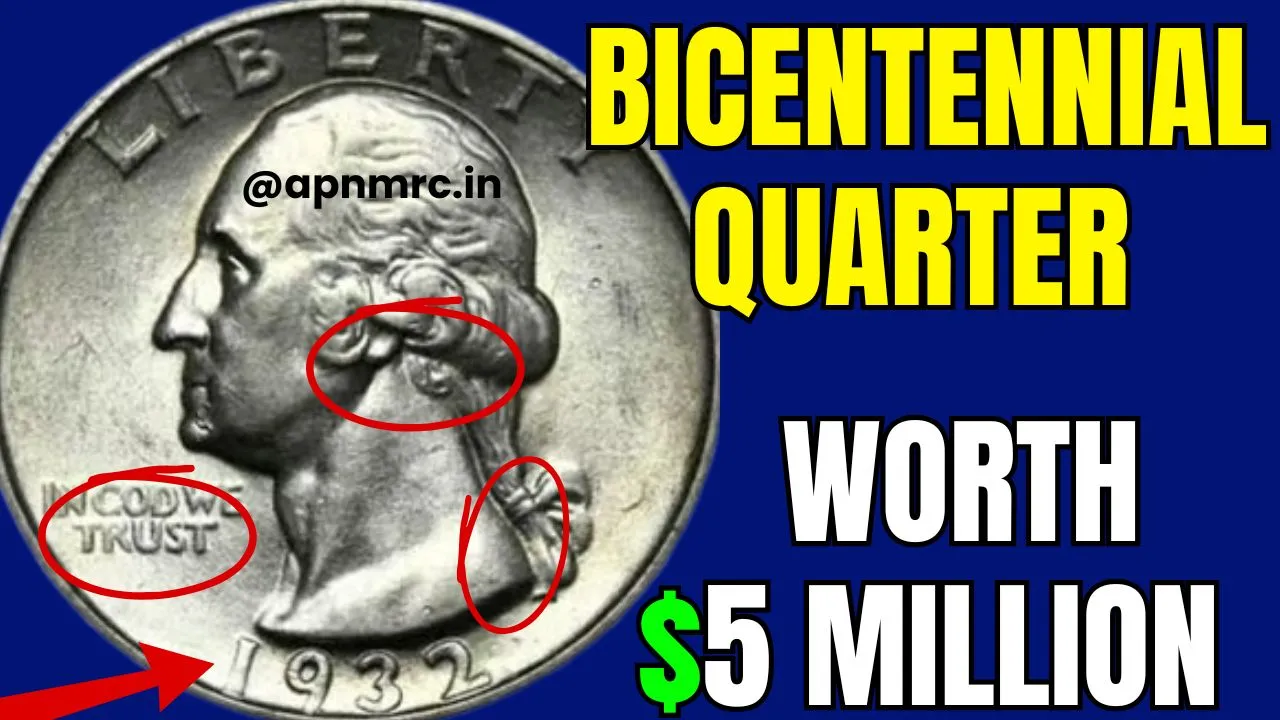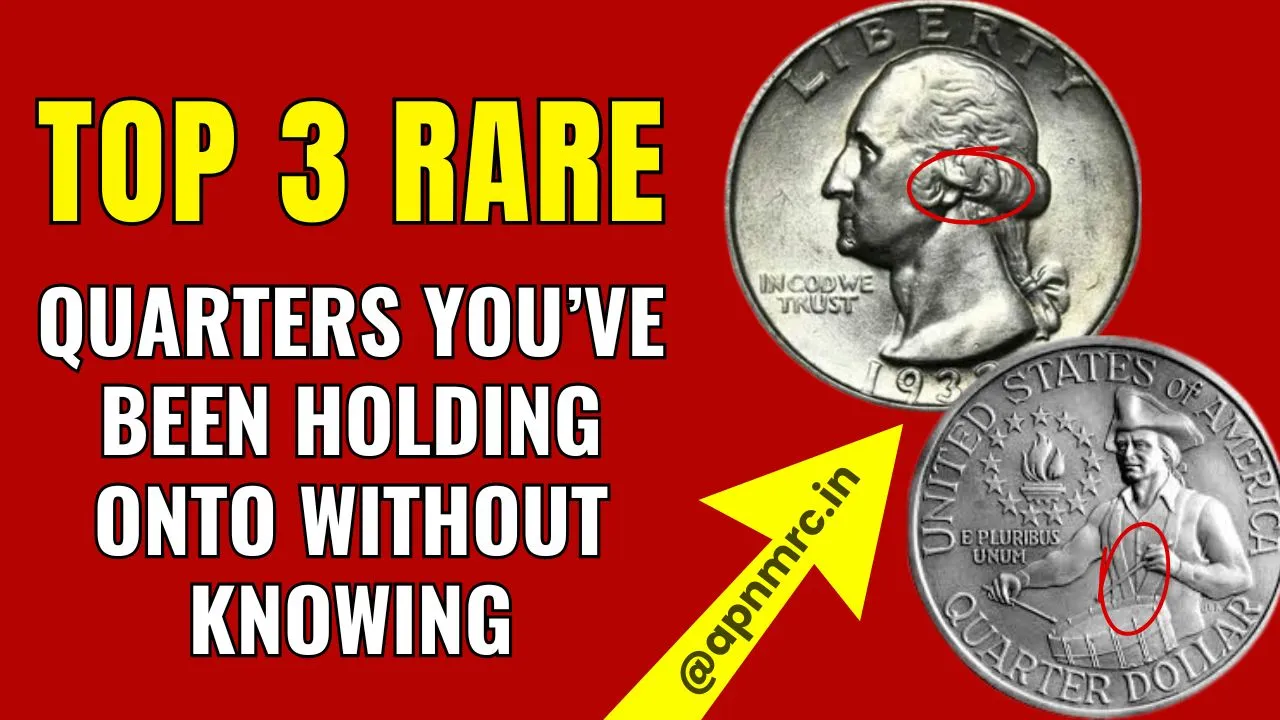Top 50 State Quarter Errors: Did you know that your pocket change could hide treasures worth thousands of dollars? State Quarter Errors are a fascinating part of numismatics that turn ordinary coins into sought-after collectibles. These mistakes, which occurred during the production of the U.S. Mint’s 50 State Quarters program (1999–2008), are rare anomalies that collectors pay top dollar to own.
This article dives into the most valuable State Quarter Errors, explaining their unique characteristics, how to identify them, and why they hold such value. From striking mishaps to missing layers, these coins are not just valuable—they’re historical markers of minting processes gone awry.
What Are State Quarter Errors?
State Quarter Errors are coins that display unintended defects caused during the minting process. These errors vary in type and rarity, but their common thread is their uniqueness. Unlike standard coins, error quarters are anomalies that escaped quality control, making them highly desirable to collectors.
These errors range from subtle design quirks to striking mishaps that make each coin truly one of a kind. Because of their scarcity and intrigue, collectors often pay a premium for these coins, with some fetching over $1,000.
Overview of the Most Valuable State Quarter Errors
| Error Type | State | Year | Description | Estimated Value |
| Double Die Errors | Delaware | 1999 | Doubling on Caesar Rodney’s horse | Up to $1,200 |
| Minnesota | 2005 | Doubling in tree designs | $500–$1,500 | |
| Off-Center Strikes | Kansas | 2005 | Design shifted off-center | $100–$1,200 |
| Georgia | 1999 | Up to 50% design missing | Over $1,000 | |
| Missing Clad Layer | Virginia | 2000 | Copper core exposed on one side | Up to $2,000 |
| Ohio | 2002 | Missing nickel layer | $800–$1,500 | |
| Mismatched Planchets | Maryland | 2000 | Struck on a dime planchet | Up to $4,000 |
| Nevada | 2006 | Struck on foreign coin planchet | Over $2,000 | |
| Die Breaks and Cuds | Wisconsin | 2004 | Extra leaf variations | $500–$1,500 |
| Alaska | 2008 | Extra bear claw | $600–$1,200 |
Why Are State Quarter Errors So Valuable?
Collectors are drawn to State Quarter Errors for several reasons:
- Rarity: Error coins are rare because they result from unintentional mistakes that are quickly corrected.
- Uniqueness: Each error coin has distinct features, making it a one-of-a-kind piece.
- Historical Significance: These errors provide a glimpse into the U.S. Mint’s production processes, adding historical value to their appeal.
Pristine or high-grade error coins are especially valuable, as their condition amplifies their rarity and desirability.
Types of State Quarter Errors
1. Double Die Errors
Double die errors occur when a coin design is struck more than once, creating a doubling effect.
- Delaware 1999 Quarter: Known for doubling on Caesar Rodney’s horse, these coins in excellent condition can fetch up to $1,200.
- Minnesota 2005 Quarter: Doubling in the tree designs has made this coin worth between $500 and $1,500, depending on its condition.
2. Off-Center Strikes
These errors happen when the coin blank isn’t properly aligned during striking, causing a portion of the design to be off-center.
- Kansas 2005 Quarter: Depending on the degree of misalignment, these coins can be worth $100 to $1,200.
- Georgia 1999 Quarter: Coins missing nearly half their design are particularly rare and can sell for over $1,000.
3. Missing Clad Layer
State quarters are typically made of a copper core and nickel-clad outer layers. If one of these layers is missing, the result is a visually striking error.
- Virginia 2000 Quarter: The exposed copper core on one side of the coin makes it highly collectible, with values up to $2,000.
- Ohio 2002 Quarter: Missing nickel layers on these coins are valued between $800 and $1,500.
4. Mismatched Planchets
Sometimes, a quarter’s design is accidentally struck on a blank meant for another coin.
- Maryland 2000 Quarter: Struck on a smaller dime planchet, these coins are extremely rare and valued at up to $4,000.
- Nevada 2006 Quarter: These coins, struck on foreign planchets, are worth over $2,000 due to their unique composition.
5. Die Breaks and Cuds
Die breaks occur when cracks or chips develop on the minting die, leaving raised or missing portions on the coin.
- Wisconsin 2004 Quarter: The “Extra Leaf” variations, both high and low leaf, are highly sought after, with prices ranging from $500 to $1,500.
- Alaska 2008 Quarter: The extra bear claw error adds a unique element to this coin, making it worth $600 to $1,200.
How to Identify State Quarter Errors
If you suspect you’ve come across an error quarter, here’s how to confirm it:
- Inspect Closely: Use a magnifying glass to identify doubling, missing features, or other anomalies.
- Weigh the Coin: Use a digital scale to check for mismatched planchets or missing clad layers.
- Consult Expert Resources: Guides like The Cherry Picker’s Guide to Rare Die Varieties can help you identify and value your coin.
FAQs About State Quarter Errors
1. What is the most valuable State Quarter Error?
The Maryland 2000 quarter struck on a dime planchet is among the most valuable, worth up to $4,000.
2. Can I find State Quarter Errors in circulation?
Yes, although rare, error quarters can occasionally be found in your pocket change or coin rolls.
3. Are all State Quarter Errors valuable?
No, the value depends on the type of error, its rarity, and the coin’s condition. Minor errors may not hold significant value.
4. How should I store error coins?
Store them in protective holders to prevent damage. Avoid cleaning the coins, as this can lower their value.
5. Where can I sell State Quarter Errors?
Error coins can be sold online, through coin dealers, or at numismatic auctions.
Final Thoughts
State Quarter Errors are more than just mistakes—they’re pieces of history that intrigue collectors and tell unique stories about the minting process. With values ranging from hundreds to thousands of dollars, finding one of these rare coins is like uncovering a hidden treasure.
Check your change carefully—you might just stumble upon a fortune! If you enjoyed this article, share it with fellow enthusiasts or leave a comment. Dive into our other numismatic guides for more tips on identifying and valuing collectible coins.







